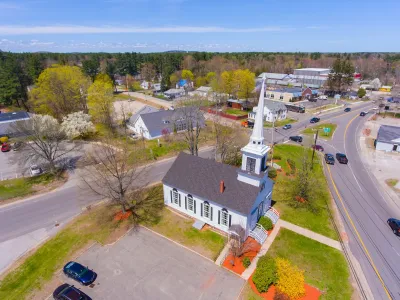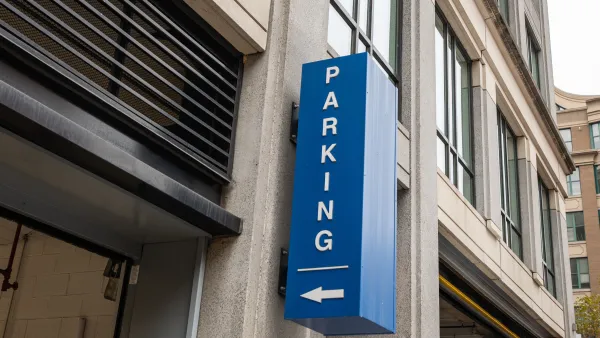Small towns and communities around the country are eliminating parking requirements at a faster rate than big cities.

In an article for Sightline, Catie Gould provides three examples of small towns that have eliminated parking minimums, noting that more small towns have done so than big cities. According to Gould, “While large cities like San Jose, California, and Austin, Texas, garner national press coverage for eliminating parking mandates, this policy reform is most commonly enacted in towns with fewer than 25,000 residents.”
For every U.S. city with populations of over 250,000 that has repealed parking requirements, two small towns (under 25,000) have done so. This is in part due to the fact that there are more small towns than big cities — “But small jurisdictions are also likely underrepresented in the Parking Reform Network data. With little to no media coverage of zoning changes in places like Gilman, Wisconsin, or Canandaigua, New York, those parking reforms are less likely to make it onto the map in the first place.” Gould also points out that many small and rural communities never enacted parking mandates in the first place.
Gould highlights Ecorse, Michigan, where deindustrialization and population loss left the town with ample underused parking and vacant buildings. Eliminating parking requirements has made it easier to redevelop properties, says town planner Nani Wolf.
FULL STORY: Twice As Many Small Towns Have Eliminated Parking Mandates As Large Cities

National Parks Layoffs Will Cause Communities to Lose Billions
Thousands of essential park workers were laid off this week, just before the busy spring break season.

Retro-silient?: America’s First “Eco-burb,” The Woodlands Turns 50
A master-planned community north of Houston offers lessons on green infrastructure and resilient design, but falls short of its founder’s lofty affordability and walkability goals.

Delivering for America Plan Will Downgrade Mail Service in at Least 49.5 Percent of Zip Codes
Republican and Democrat lawmakers criticize the plan for its disproportionate negative impact on rural communities.

Test News Post 1
This is a summary

Test News Headline 46
Test for the image on the front page.

Balancing Bombs and Butterflies: How the National Guard Protects a Rare Species
The National Guard at Fort Indiantown Gap uses GIS technology and land management strategies to balance military training with conservation efforts, ensuring the survival of the rare eastern regal fritillary butterfly.
Urban Design for Planners 1: Software Tools
This six-course series explores essential urban design concepts using open source software and equips planners with the tools they need to participate fully in the urban design process.
Planning for Universal Design
Learn the tools for implementing Universal Design in planning regulations.
EMC Planning Group, Inc.
Planetizen
Planetizen
Mpact (formerly Rail~Volution)
Great Falls Development Authority, Inc.
HUDs Office of Policy Development and Research
NYU Wagner Graduate School of Public Service





























